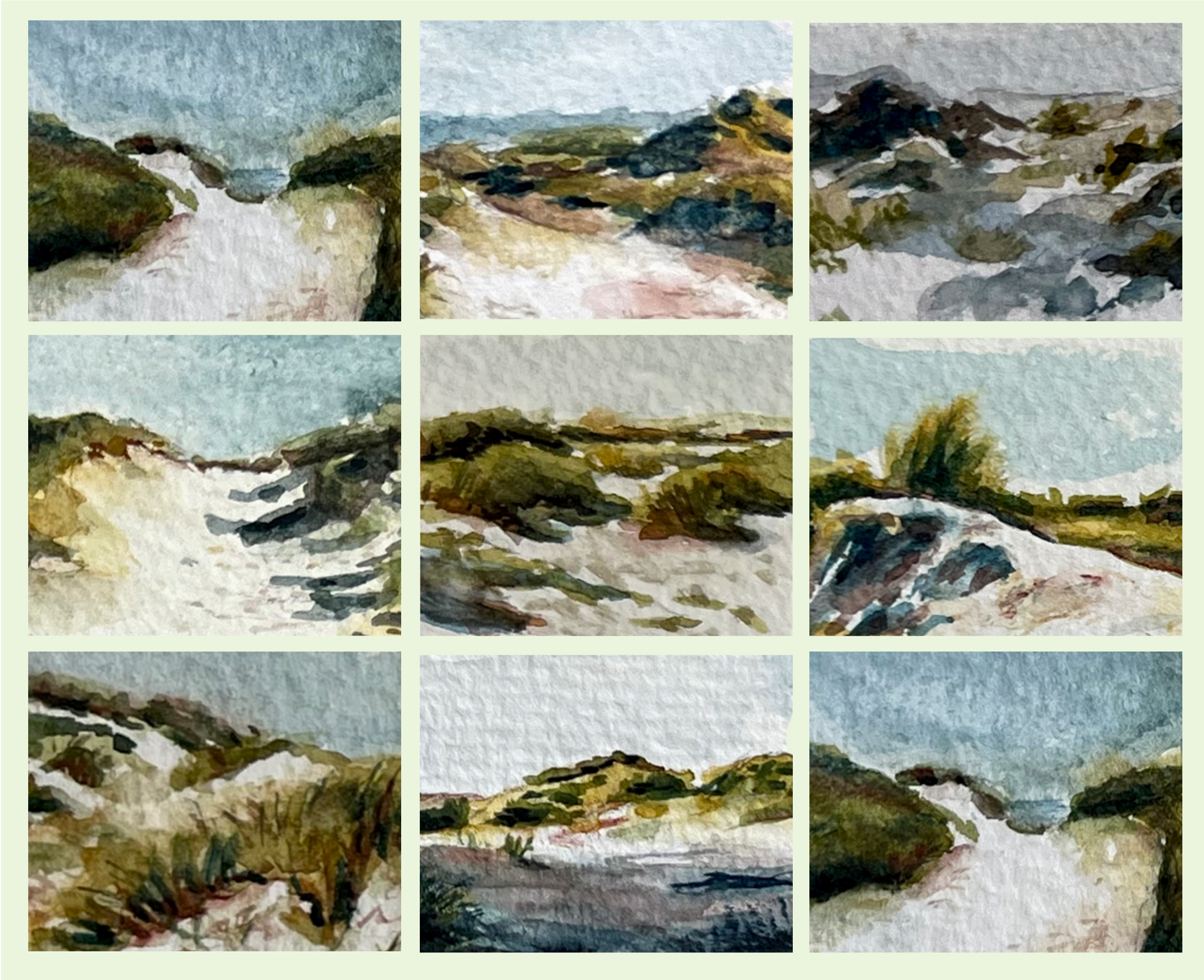Dunes could be considered as climate-fossils, their layers and shape reflecting the climate during deposition, both on and off Earth. Image credit: Minh Nguyen, The Oxford Scientist.
…dunes can provide a unique window into the past.
Dunes are hills of sediment, often sand, that are deposited and shaped by the wind. They occur in many places on and beyond our planet and play a vital part in environmental and social systems. Coastal dunes have many roles: they act as natural buffers, prevent erosion, provide habitats for plants and animals, and serve as recreational spaces. Desert dunes often assemble in expansive inland dune fields, consisting of thousands of individual dune features. They have attracted scientific interest beyond their ecological and recreational significance: dunes can provide a unique window into the past.
Desert dune fields occur on almost every continent and occupy extensive areas, covering about 10% of the global land surface. They come in many forms, including crescent-shaped “barchans”, “star dunes”, and different types of linear ridges. Dunes can also be classified on a spectrum of activity, defined by their varied levels of mobility, which is essentially a function of aridity (dryness) and wind speed.
On the inactive side of the spectrum, dunes are usually vegetated and have often been immobile for hundreds or thousands of years. These are known as “relict” dunes, and these can preserve valuable information about past climates and environments. Examples of dune fields that are currently stable can be found in Australia, the Sahara Desert, southern Africa, and the US.
One way of making use of relict dunes as climate archives is to reconstruct their formation by thoroughly analysing and dating their “depositional layers”. Optically Stimulated Luminescence (OSL) dating is a method that enables us to determine when quartz or feldspar (minerals occurring in sand grains) were last exposed to sunlight. In this way, researchers can determine when different layers of a dune were deposited. The timing and thickness of same-age layers indicate when phases of high, low, or no deposition took place. It is also possible to analyse the type and origin of sediment that was deposited at specific times.
This information gives insight into the climate during a dune’s history. Aridity, little or no vegetation, and strong winds are needed for sand grain movement. Phases of dune construction and activity, therefore, indicate dry climates and wind speeds that are high enough to pick up sand grains.
The shape and arrangement of relict dunes provide further hints for unravelling climate history. Knowing what kind of wind regime creates a certain type of dune means we can deduce information about the wind patterns that drove its formation.
The shape and arrangement of relict dunes provide further hints for unravelling climate history.
For example, star dunes are formed by multi-directional winds, while crescent-shaped barchans are formed in unidirectional wind regimes, with their “nose” indicating where the dominating wind comes from. Changes in wind direction between or within dune fields can therefore become apparent through changes in dune orientation.
Satellite remote sensing is an important tool for observing dune shapes and patterns across scales. It enables us to not only map and analyse dunes on Earth, but also in truly remote places—there are dunes on extra-terrestrial bodies such as Venus, Pluto, Titan (Saturn’s largest moon), and most prominently on Mars.
Given the limited ability to take direct measurements on Mars, scientists are using elaborate models to simulate and understand the planet’s terrain and atmosphere. A key source of information is HiRISE (High Resolution Imaging Experiment), a camera that provides imagery of the Martian surface in sub-metre resolution. Studies have used these images to locate and analyse dunes and to draw inferences about the atmospheric circulation on Mars.
…[dunes] may even teach us more about the conditions on other planetary bodies.
Of course, environmental and atmospheric conditions on Mars differ from those on Earth. And relict dunes, on Earth or elsewhere, only provide a coarse and limited view of the past. Nevertheless, applying our knowledge of dune formation and morphology gives a unique glimpse of the past, and it may even teach us more about the conditions on other planetary bodies.





